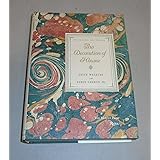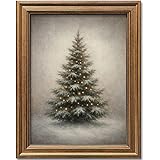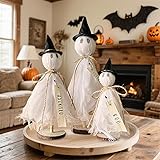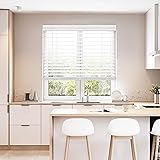Have you ever walked into a room and felt like something was just…off? Perhaps it was difficult to pinpoint the exact issue, but an undeniable sense of cheapness seemed to permeate the space. Many individuals find themselves in this exact predicament, wondering why their home doesn’t quite exude the polished, expensive feel they aspire to. While the accompanying video above visually highlights some common home decor mistakes that can detract from your home’s appeal, understanding the ‘why’ behind these blunders and, more importantly, ‘how’ to fix them is crucial.
It can be surprising how seemingly minor decorating choices collectively contribute to a home’s overall perceived value. Often, these are not about spending a fortune but rather about making smarter, more intentional decisions. The goal for many is to create an inviting, sophisticated environment that reflects personal style without breaking the bank. Thankfully, achieving an elevated look for your living space is often more about savvy styling than deep pockets.
Let’s delve deeper into some of the most prevalent home decor mistakes that are frequently observed and explore practical, budget-friendly solutions. By addressing these key areas, it is possible for anyone to transform their home from merely passable to truly spectacular, ensuring that your efforts in elevating home decor yield impressive results.
Avoiding Common Home Decor Mistakes to Elevate Your Space
Creating a home that feels both luxurious and welcoming is an achievable goal, even on a modest budget. The secret often lies in understanding fundamental design principles and applying them thoughtfully. Below, some of the most significant home decor mistakes are outlined, alongside actionable advice to help you cultivate a more sophisticated aesthetic.
Mistake #1: Over-Cluttering with Too Many Small, Insignificant Items
One of the quickest ways for a space to look messy and inexpensive is by filling it with an excessive number of small, random objects. These items, often acquired without a cohesive plan, tend to accumulate on surfaces, creating visual noise and preventing any single piece from standing out. It is often the case that these collections include souvenirs, knick-knacks, and various decorative pieces that lack a unified theme or purpose.
The Fix: Embrace Intentional Curation and Scale
- Declutter Ruthlessly: A crucial first step involves a thorough decluttering process. Items that do not bring joy, serve a purpose, or contribute to the overall aesthetic should be removed or stored away.
- Group Like Items: Instead of scattering small items, consider grouping them in odd numbers (e.g., three or five) on a tray or in a designated area. This strategy is known to create a more cohesive and intentional display.
- Invest in Statement Pieces: Replacing several small, cheap-looking items with one or two larger, more substantial decorative pieces can dramatically alter the perception of a room. For example, a large, striking vase or a substantial sculpture can anchor a coffee table more effectively than a collection of tiny unrelated objects.
- Vary Heights and Textures: When grouping, ensure that items have varying heights and textures. This adds visual interest without creating clutter.
Mistake #2: Neglecting the Power of Proper Lighting
Poor lighting can make even the most beautifully decorated room feel dim, unwelcoming, and, unfortunately, cheap. Many homes rely solely on a single overhead fixture, which often results in harsh shadows and an uninviting ambiance. The absence of layered lighting is a common oversight that significantly impacts a room’s mood and functionality.
The Fix: Implement Layered Lighting for Ambiance and Functionality
- Ambient Lighting: This is the general illumination of a room, often provided by overhead fixtures. It is advised that you choose fixtures with diffusers or dimmers to soften the light.
- Task Lighting: Essential for specific activities, such as reading or cooking. Examples include reading lamps next to a sofa or under-cabinet lighting in a kitchen.
- Accent Lighting: Used to highlight specific features, such as artwork or architectural details. This can be achieved with spotlights or picture lights.
- Warm Light Bulbs: Opt for light bulbs with a warmer color temperature (around 2700K-3000K). This creates a cozier, more inviting atmosphere compared to harsh, cool-toned lighting.
- Unique Fixtures: Upgrading dated light fixtures can be an incredibly impactful way to instantly elevate a room’s aesthetic. Affordable yet stylish options are widely available.
Mistake #3: Ignoring Scale and Proportion in Furniture Placement
When furniture pieces are either too large or too small for a given space, the result is often a visually unbalanced and uncomfortable environment. A massive sofa in a tiny living room can make the room feel cramped, while small, disparate pieces in a large room can make it feel empty and unwelcoming. This oversight is a fundamental error in interior design tips.
The Fix: Measure, Plan, and Balance
- Measure Your Space: Before purchasing any new furniture, accurately measure the dimensions of your room. This includes not just length and width, but also ceiling height and door/window placements.
- Draw a Floor Plan: Sketching a basic floor plan to arrange furniture virtually can prevent costly mistakes. There are many free online tools available for this purpose.
- Balance Visual Weight: It is important to consider the visual weight of your furniture. A large, solid piece might be balanced by lighter, airier pieces elsewhere in the room.
- Consider the “Negative Space”: The empty space around and between your furniture is just as important as the furniture itself. Sufficient negative space allows a room to breathe and feel more open.
- Avoid Blocked Pathways: Ensure that furniture arrangement allows for easy flow and clear pathways through the room.
Mistake #4: Using Cheap-Looking Textiles and Window Treatments
Curtains, throw pillows, and rugs are often seen as finishing touches, but their quality and style can significantly impact the overall perception of a room. Thin, poorly constructed curtains, limp throw pillows, or undersized rugs are classic home decor mistakes that instantly downgrade a space.
The Fix: Invest in Quality Fabrics and Proper Sizing
- Floor-Length Curtains: Curtains should always reach the floor, or ideally, just kiss the floor or puddle slightly for a luxurious look. Hanging curtains wider and higher than the window frame can make windows appear larger and ceilings taller.
- Quality Fabrics: Opt for textiles made from natural fibers like linen, cotton, or velvet. These materials tend to look more expensive and drape beautifully. Avoid shiny, synthetic fabrics that often appear cheap.
- Fullness in Curtains: Ensure curtains are adequately full. As a general rule, the total width of your curtain panels should be 1.5 to 2 times the width of your window.
- Plush Throw Pillows: Replace flat, deflated pillows with ones that have substantial inserts (e.g., down or a good quality synthetic fill). Mixing textures and patterns can add depth.
- Appropriately Sized Rugs: A rug should be large enough to anchor the furniture in a seating area. In a living room, at least the front legs of all main furniture pieces should rest on the rug. An undersized rug can make a room feel disjointed.
Mistake #5: Neglecting Wall Decor or Using Inappropriate Art
Bare walls can make a room feel unfinished and impersonal, while poorly chosen or incorrectly hung art can distract from the overall aesthetic. Small, isolated pieces of art, or art that doesn’t resonate with the room’s style, are common cheap home decor fixes that unfortunately backfire.
The Fix: Thoughtful Art Selection and Strategic Placement
- Larger Art Pieces: One large, impactful piece of art can make a bigger statement than many small ones. Consider its scale relative to the wall and furniture below it.
- Gallery Walls: If you love collecting smaller pieces, curate a gallery wall. Plan the layout on the floor first, ensuring a cohesive arrangement and consistent spacing between frames.
- Hang at Eye Level: Art should generally be hung at eye level. If hanging above a piece of furniture, the bottom of the frame should be approximately 6-8 inches above the furniture.
- Utilize Mirrors: Mirrors not only serve a functional purpose but also reflect light, making a room feel larger and brighter. Choose frames that complement your decor style.
- Personalize Your Walls: Displaying personal photos or items that hold sentimental value can add a unique and sophisticated touch, provided they are framed and displayed thoughtfully.
Mistake #6: Exposed Cords and Cables
In today’s tech-heavy world, it is easy for a multitude of cords and cables from TVs, lamps, chargers, and other electronics to create a tangled mess. This often overlooked detail instantly makes a space look disheveled and untidy, detracting significantly from an otherwise well-decorated room. It’s a small detail that has a large visual impact, often signaling a lack of attention to detail in elevating home decor.
The Fix: Embrace Smart Cable Management Solutions
- Cable Sleeves and Wraps: These are effective for bundling multiple cords together, making them less noticeable. They come in various colors to blend with your decor.
- Cord Organizers and Clips: Used to secure cords along furniture legs or baseboards, preventing them from sprawling across the floor.
- Furniture with Built-in Management: Some TV stands or desks are designed with discreet cutouts and channels for routing cables, keeping them out of sight.
- Decorative Baskets or Boxes: For areas where cords cannot be completely hidden, a stylish basket or decorative box can be used to contain power strips and excess cable length.
- Wall-Mounted Solutions: For wall-mounted TVs, consider in-wall cable management kits to completely conceal cords, providing a clean, seamless look.
By thoughtfully addressing these common home decor mistakes, anyone can take significant steps toward creating a more refined and visually appealing living environment. The emphasis is consistently placed on intentional choices, quality over quantity, and a keen eye for detail, which are the cornerstones of truly elevating home decor.











